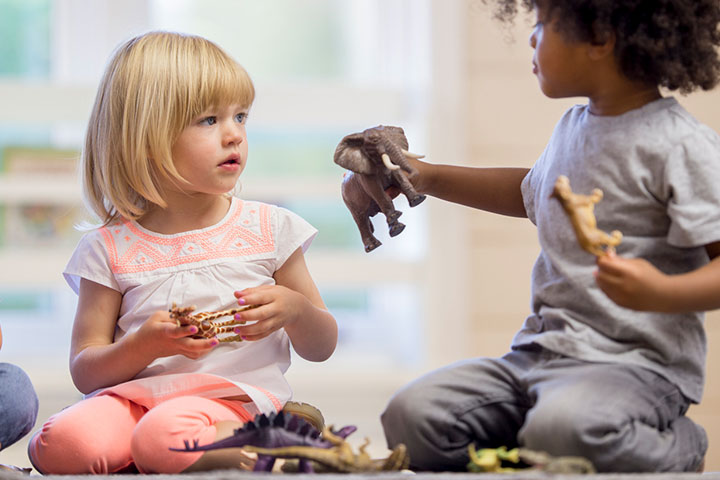The “art of sharing” in children refers to the development of the social skill and behavior of willingly giving, lending, or distributing resources, objects, or experiences to others. It involves understanding the needs and desires of others and being willing to accommodate those needs by dividing or giving up something that one possesses. Sharing is a key aspect of social interactions and is particularly important for young children as they learn to navigate relationships and engage with their peers and the world around them. For young children, learning to share can be a challenging but crucial step in their development. As caregivers, parents, and educators, it’s our responsibility to guide them through this process. This blog explores effective strategies for teaching young children to share, emphasizing the importance of empathy, communication, and positive reinforcement.
- The Significance of Teaching Sharing
Sharing extends beyond mere material possessions; it embodies empathy, cooperation, and a sense of connection with others. Learning to share in early childhood contributes to:
- Social Development: Sharing contributes to the formation of social bonds. Children who share are often seen as considerate and friendly, making it easier for them to make friends and build positive relationships.
- Empathy: By sharing, children develop empathy as they understand others’ needs and feelings.
- Conflict Resolution: Sharing encourages negotiation and compromise, essential skills for resolving conflicts.
- Self-Regulation: Children learn to manage their impulses and emotions when they share with others.
- Community Building: Sharing fosters a sense of community, teaching children that we’re all interconnected.
- Generosity: Sharing involves an element of generosity where children willingly give or lend something to others without expecting immediate returns.
- Reciprocity: While sharing doesn’t necessarily entail immediate reciprocation, it does contribute to a sense of reciprocity in relationships. When children share, they contribute to a positive cycle of give-and-take that fosters a sense of trust and community.
- Communication: Learning to share involves effective communication. Children need to express their willingness to share, negotiate terms, and understand the feelings and perspectives of others.
- Delayed Gratification: Sharing requires children to delay their own gratification and acknowledge that they can’t always have everything they want immediately. This is an important aspect of emotional growth and self-control.
- Cooperation: Sharing often involves working together and cooperating with others. Whether it’s sharing toys during playtime or sharing resources in a group activity, children learn the value of collaboration.
- Cultural and Moral Values: In many cultures, sharing is considered a moral value and an important aspect of upbringing. Teaching children to share from a young age helps instill these cultural and moral values.
- Positive Self-Image: Children who engage in sharing often experience a boost in self-esteem and a sense of pride. They recognize the positive impact their actions have on others and perceive themselves as helpful and kind individuals.
2. Effective Strategies for Teaching Sharing - Lead by Example- Children often mimic the behavior they observe. Demonstrate sharing in your own actions, whether it’s sharing a snack with them or lending something to a friend.
- Teach Communication Skills- Encourage children to express their feelings when they’re not comfortable sharing. Teach them to use words to express themselves instead of resorting to negative behavior.
- Offer Praise and Positive Reinforcement- When children share, offer praise and positive reinforcement. Highlight how their generosity made their friend happy.
- Plan Playdates and Group Activities- Group settings provide natural opportunities for sharing. Organize playdates or group activities where children can practice sharing with their peers.
- Provide Choices- Give children a sense of agency by allowing them to choose what they’re comfortable sharing. This helps them feel more in control of the situation.
- Celebrate Small Wins- Recognize even the smallest instances of sharing. This reinforces the behavior and encourages children to continue sharing in the future.
- Use Pretend Play- Engage in pretend play scenarios where sharing is the central theme. This allows children to explore sharing dynamics in a controlled environment.
Teaching young children to share is an integral part of their social and emotional development. By leading through example, creating a positive environment, and using effective strategies, caregivers can nurture this valuable skill. Remember that sharing is a gradual process, and each child’s pace may vary. Patience, empathy, and consistent guidance will help children understand the joy and benefits of sharing with others. As they master this art, they’ll not only build strong relationships but also contribute to a more harmonious and compassionate world.

